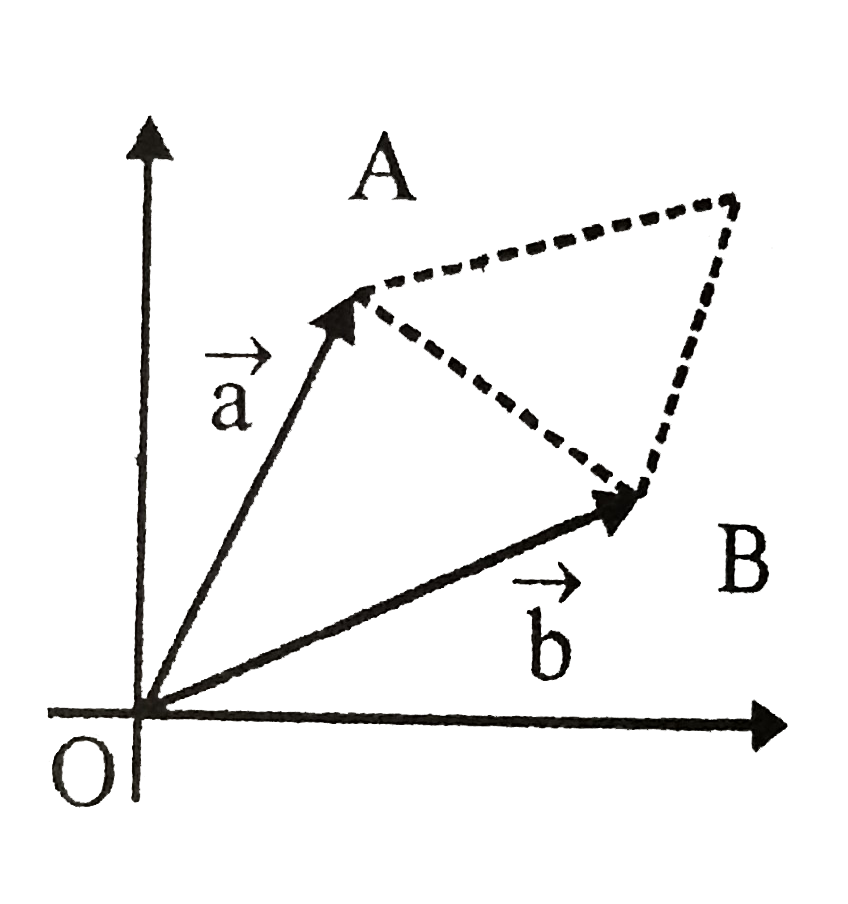If →a=3ˆi+ˆj+2ˆkand→b=2ˆi−2ˆj+4ˆk
(i) find the magnitude of →a×→b
(ii) find a unit vector perpendicular to both a and b.
(iii) find the cosine and sine of the angle between the vectors a and b
Video Solution
Text Solution
→a×→b=∣∣
∣
∣∣ˆiˆjˆk3122−24∣∣
∣
∣∣=8ˆi−8ˆj−8ˆk
∴ Magnitude of →a×→b=∣∣→a×→b∣∣
√(8)2+(−8)2(−8)2=8√3
(ii)ˆn=→a×→b∣∣→a×→b∣∣=8ˆi−8ˆj−8ˆk8√3=1√3(ˆi−ˆj−ˆk)
There are two unit vectors perpendicular to both →vand→b they are
±ˆn=±1√3(ˆi−ˆj−ˆk)
(iii) To find cosθ
→a.→b=|→a|∣∣→b∣∣cosθ=(3ˆi+ˆj+2ˆk).(2ˆi−2ˆj+4ˆk)
=(3)(2)+(1)(−2)+2(4)=12
|ˆa|=√32+12+22=√14
∣∣ˆb∣∣=√(2)+(−2)2+(4)2=√24
cosθ=→a.→b/|→a|∣∣→b∣∣=12√14√24=12√2√7.2√2√3=√37
Also, sinθ=∣∣→a×→b∣∣/|→a|∣∣→b∣∣=8√3√14√24=2√7
Also, sinθ=√1−cos2θ=√137=√47=2√7

|
Topper's Solved these Questions
- UNIT DIMENSION, VECTOR & BASIC MATHSBOOK - BANSALCHAPTER - UNIT DIMENSION, VECTOR & BASIC MATHSEXERCISE - Solved Example
17 Videos
- UNIT DIMENSION, VECTOR & BASIC MATHSBOOK - BANSALCHAPTER - UNIT DIMENSION, VECTOR & BASIC MATHSEXERCISE - PRACTICE EXERCISE
4 Videos
- KINETIC THEORY OF GASESBOOK - BANSALCHAPTER - KINETIC THEORY OF GASESEXERCISE - Section-B
13 Videos
Similar Questions
Knowledge Check
If →A=2ˆi+ˆj+ˆk and →B=ˆi+2ˆj+2ˆk, find the magnitude of compinent of (→A+→B) along →B
A4 unitB5 unitC6 unitD7 unitIf →a=(ˆi+2ˆj−3ˆk)and→b=(3ˆi−ˆj+2ˆk) then the angle between (→a+→b) and (→a−→b) is
Aπ3Bπ4Cπ2D2π3If →A=2ˆi+ˆj+ˆk and →B=ˆi+ˆj+ˆk are two vectors, then the unit vector is
APerpendicular to →A is (−ˆj+ˆk)1√2BParallel to →A is 2ˆi+ˆj+ˆk√6CPerpendicular to →B is (−ˆj+ˆk√2)DParallel to →A is ˆi+ˆj+ˆk√3
If →A=2ˆi+3ˆj−ˆk and →B=−ˆi+3ˆj+4ˆk, then find the projection of →A on →B.
View SolutionIf →a=4ˆi−ˆj+ˆk and →b=2ˆi−2ˆj+ˆk, then find a unit vector parallel to the vector →a+→b.
View SolutionIf →a=2ˆi+ˆk, →b=ˆi+ˆj+ˆk, find the magnitude of →a×→b.
View SolutionIf →a=3ˆi+ˆj−4ˆk,→b=6ˆi+5ˆj−2ˆk and |→c|=3, find the vector →c, which is perpendicular to both →a and →b.
View Solution→A=2ˆi+4ˆj+4ˆk and →B=4ˆi+2ˆj−4ˆk are two vectors. Find the angles between them.
View Solution